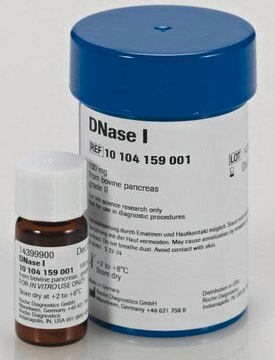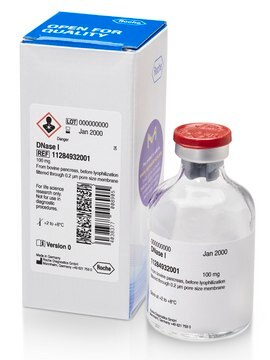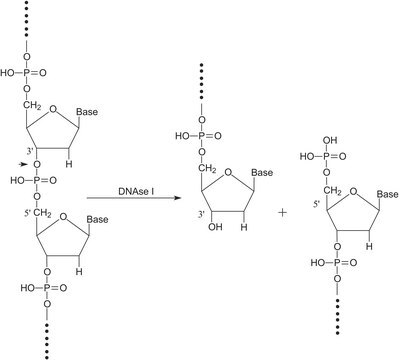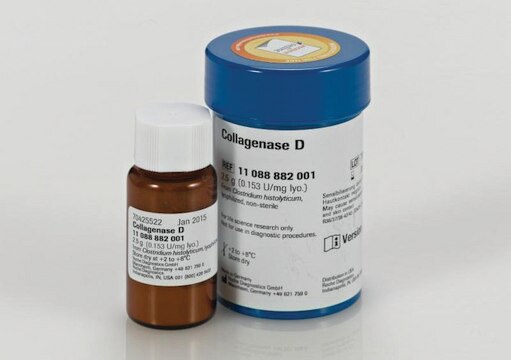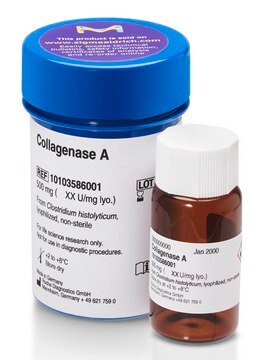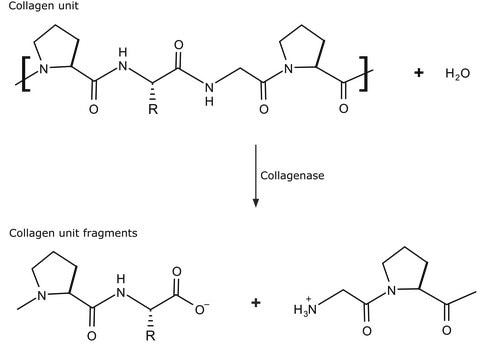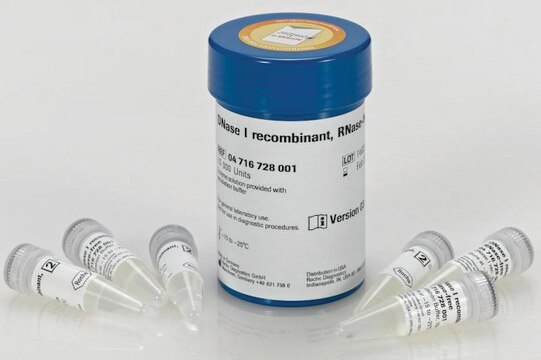B20221
Collagenase-DNase I blend
Tissue dissociation blend, lyophilized powder, suitable for cell culture
About This Item
Empfohlene Produkte
Qualitätsniveau
Form
lyophilized powder
Spezifische Aktivität
(Collagenase (FALGPA assay) 1.0-5.0 units/ml in 10 ml HBSS (#H6648))
(Deoxyribonuclease I activity: 200-2000 Kunitz units/ml in 10 ml HBSS (#H6648))
Lagertemp.
-10 to -25°C
Verwandte Kategorien
Allgemeine Beschreibung
Biochem./physiol. Wirkung
Angaben zur Herstellung
Signalwort
Danger
H-Sätze
P-Sätze
Gefahreneinstufungen
Resp. Sens. 1
Lagerklassenschlüssel
13 - Non Combustible Solids
WGK
WGK 2
Flammpunkt (°F)
Not applicable
Flammpunkt (°C)
Not applicable
Analysenzertifikate (COA)
Suchen Sie nach Analysenzertifikate (COA), indem Sie die Lot-/Chargennummer des Produkts eingeben. Lot- und Chargennummern sind auf dem Produktetikett hinter den Wörtern ‘Lot’ oder ‘Batch’ (Lot oder Charge) zu finden.
Besitzen Sie dieses Produkt bereits?
In der Dokumentenbibliothek finden Sie die Dokumentation zu den Produkten, die Sie kürzlich erworben haben.
Unser Team von Wissenschaftlern verfügt über Erfahrung in allen Forschungsbereichen einschließlich Life Science, Materialwissenschaften, chemischer Synthese, Chromatographie, Analytik und vielen mehr..
Setzen Sie sich mit dem technischen Dienst in Verbindung.